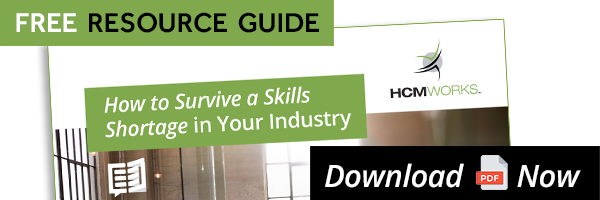Today’s workplace is changing. The large majority of industries are facing a shortage in skilled workers, leaving the acquisition of top talent and filling gaps in your workforce a constant struggle. The result? The growth of your business is hindered.
Fortunately, however, a new workforce has developed over the past few years that is changing the game for large companies - but only those that are able to adapt and create world-class talent acquisition and management programs.
The contingent workforce, which now makes up around 30-40 per cent of the entire US workforce, will give your company access to highly-trained non-permanent workers that offer your business flexibility, the ability to fill workforce gaps at short notice and qualified expertise.
Most of all, these workers will help you to create a flexible workforce. But what actually is a flexible workforce, what are the benefits and how can your organization implement one? HCMWorks explains all in this blog.
What is a flexible workforce?
There is no exact definition for a flexible workforce, but it is a strategy that ensures your company is constantly adapting to meet the needs of its workforce targets and yearly goals.
This could involve hiring multiple temporary workers to deal with a spike in business, hiring consultants for a specific period of time to give your business qualified expertise, engaging freelancers for specific projects and much more.
In essence, a flexible workplace is one that mixes full-time, part-time, and temporary employees to create a group of multi-skilled workers that can grow or shrink in size depending on the needs of your business.
Implementing a flexible workforce isn’t just about the workers you hire. It’s about creating a nimble, adaptive, flexible and curious workforce management program, with a proactive strategy that ensures you are constantly adapting in a bid to meet your business goals.
This means getting rid of the rigid and complex workforce management programs of the past, and implementing new methods that will help your organization maximize its return on investment (ROI).
How to implement a flexible workforce
The most important aspect of implementing a flexible workforce into your organization, is to understand how your company is (and has been) staffed and what you need to meet workforce objectives.
You’ll need to break down your workforce into full-time, part-time and temporary workers, and understand exactly what they do and where your workforce can improve. Having complete visibility and control over your current workforce and how you hire new workers will give you an idea of which areas of your business you can start developing a flexible workforce.
Managing a flexible workforce isn’t easy. In fact, for a truly efficient workforce that helps your company get results and save money at the same time, the help of a managed services provider (MSP) is essential for any business.
An MSP with specific contingent and in-house workforce expertise will ensure you have a strategy and a centralized management workforce system in place that improves efficiencies, prevents inconsistent hiring techniques, improves your access to top talent, reduces costs and helps your company grow.
What are the advantages of a flexible workforce?
Your company’s goals aren’t static. Sometimes you will have a slowdown in business, while other times your business will be busier and resources will be stretched. Contingent workers and a flexible workforce allows your company to remove the rigid workforce policies of the past.
This comes with a wide variety of benefits, including:
- Extra capital to invest in your business during down periods and increased profits during busy periods.
- Happier workers that aren’t constantly working overtime to meet almost-impossible demands.
- Access to top talent and expertise that help you deliver maximum value to your clients.
- Constant access to workers with fresh ideas that can drive your company into the future.
Want more information about how your organization can overcome the shortage in skilled workers by building a flexible workforce? Contact HCMWorks today, and find out how we can transform your organization’s workforce management strategy.



